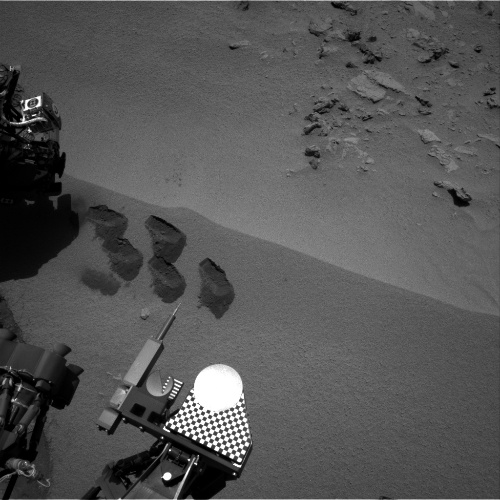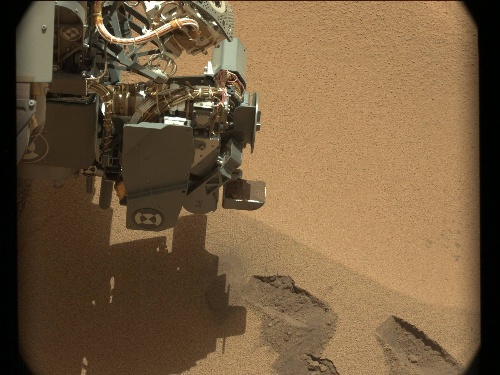This week Curiosity has dug into Rocknest for the fifth glorious time and has a sample destined for the Sample Analysis at Mars (SAM). Remember that last time it was the CheMin instrument (see this post) that got the first sample and now here we are with yet another state-of-the-art instrument about to receives its share.
 |
| Five little trenches on sol 93's navigation view (NASA/JPL) |
The focus is on preparing SAM for delivery of its first solid sample, which involved a "dry run" that went well and preconditioning on Sol 91. Most SAM activities require a lot of power, as expected, so there wasn't much room for other science. But the science team squeezed in some ChemCam and Navcam observations, along with the normal background REMS, DAN and RAD measurements.'Dry run' here I believe pertains to the procedure of running the instrument with absolutely nothing inside to check for possible contamination of the sample chamber before an actual sample is delivered. In the previous atmospheric runs they would do such moves before receiving a sample of Martian air as well as after they has finished using the sample. This helps to rule out or compensate any contamination signals.
I really find SAM amazing. I loved chemistry a lot back in my highschool days and this is one instrument that will keep me busy while I try to read up on it.
 |
| A full bucket. Sol 93 left Mastcam eye (NASA/JPL/MSSS) |
No comments:
Post a Comment